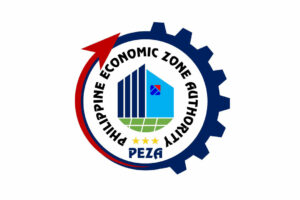Property consultant backs passage of land use law

A PROPERTY consultant is calling for the passage of a law on a national land-use plan to ensure that future infrastructure projects will also respond to the needs of the communities around them.
“It is not enough to have well mastered-planned pockets of development like Rockwell, BGC, Greenhills, or the Commons. You also have to fix the areas around them,” said Jaime A. Cura, RGV Group’s vice-chairman and former national president of the Chamber of Real Estate and Builders’ Associations, Inc., in a recent interview.
He said it is not difficult to understand and accept the need for a more coherent, comprehensive, and sustainable basis for future planning and construction of future projects.
He said there is a need for expensive infrastructure to have an impact on the lives of the people “who have the right to live, work and play.”
“And that’s why it has now led to the importance and urgency of passing, by legislature, a national land-use plan which has long been delayed and which must be reflected in comprehensive land-use plans for every city or municipality. It is this land-use plan — and forced through proper zoning ordinances — that holds the key to sustained, relevant, and competitive real-estate development,” he said.
The proposed National Land Use Act seeks to institutionalize land use and physical planning to determine and evaluate appropriate land use and allocation patterns by following a “National Physical Framework Plan.” The framework plan serves as a guide for the planning and management of the country’s land and other physical resources at the national and sub-national levels. It will also indicate broad spatial directions and policy guidelines on protection land use, production land use, settlement development, and infrastructure development.
It aims to clear delineation of land use categories as it will institutionalize four land-use categories, namely: protection land use, production land use, settlements and institutional land use, and infrastructure land use.
Protection land use refers to the use of land primarily for conservation purposes while production land use refers to the use of land in the most efficient sustainable, and equitable utilization, development and management of land for productive purposes, which are not classified for protection land use.
On the other hand, settlements and institutional land use cover the use of urban and rural land for the development and improvement of settlements involving the spatial distribution of population, identification of the roles and functions of key urban centers, determination of relationships among settlement areas, and the provision of basic services and facilities to such settlements.
Lastly, infrastructure land use refers to the use of land dedicated to the provision of basic services that foster economic and other forms of integration necessary for producing or obtaining the material requirements of Filipinos, in an efficient, responsive, safe, and ecologically friendly built environment.
The bill also calls for the creation of a “National Mapping and Spatial Data Infrastructure Program” that will be implemented, coordinated, and monitored through the creation of an inter-agency technical committee composed of concerned government agencies.
The program will be responsible for the production of base and decision maps and associated spatial databases for all planning levels based on the guidelines of the National Land Use Policy Council, which will replace the National Land Use Committee under the National Economic and Development Authority.
Senate Bill 358 or the National Land Use And Management Act Of The Philippines was filed on July 11, 2019 by Senator Risa Hontiveros and has been pending in the committee since July 31, 2019, as said on the Senate of the Philippines’ website.
Similarly, Mr. Cura is proposing that the government should consider teaming up with the private sector in property projects through public-private partnerships (PPP).
“For government to develop land or any of its assets, it may either put all the necessary resources by itself, by its lonesome, or [it may] collaborate with other entities (usually in the private sector) who are more experienced, more knowledgeable, more agile and more effective in managing the resources cost-effectively,” he added.
PPP aims to engage the private sector to collaborate with the government through technology, finance, and other resources that the private sector usually manages well in the businesses that they run in the creation of infrastructure projects.
Mr. Cura enumerated three benefits of PPP for the government: lessens the risk for the two parties — both for the government and the private entity, gives a better assurance of timely completion of a project, and provides more funds to finish a project as private entities can avail of the private money in banks.
Mr. Cura said that although PPP is beneficial for both parties, the government must remain vigilant and enlightened in balancing the mindset of being the regulator and facilitator of these partnerships to ensure the proper protection of public interest against non-compliance with promised services and benefits of the private companies. — Justine Irish D. Tabile




